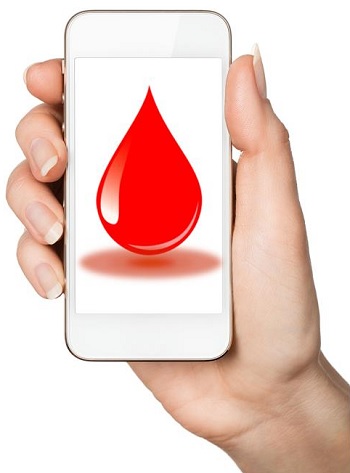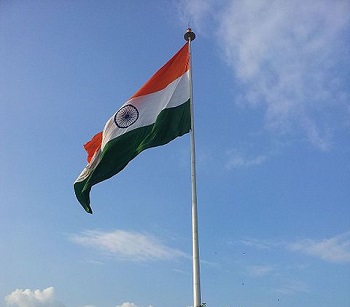A new partnership between major corporations in the company could transform the process in Ghana.
A new form of mobile health technology is being prepared to change the very core processes and nature of the way that blood donations are collected in Ghana, in order to considerably improve the current system.
A new partnership has formed between Mpire Info Business System and Vodafone Ghana Foundation.
The result of the partnership has been a new mobile health app called MoJa. The new technology based effort is designed to help to encourage greater voluntary blood donations for therapeutic use in African hospitals as well as throughout the world. The MoJa app has proved itself to be very promising as it incentivizes blood donations by offering free access to qualified medical practitioners through virtual clinics, daily health tips, and even live chats.
This mobile health app is cloud based, making it possible for the National Blood Service to replenish its supplies when needed.
 It functions by matching and contacting donors who are interested in helping in times of emergencies when blood supplies are very low and are in desperate need of increases.
It functions by matching and contacting donors who are interested in helping in times of emergencies when blood supplies are very low and are in desperate need of increases.
There have been aggressive social media and outreach campaigns that have functioned to bring donors in . Those donors are then added to the national database of volunteer donors so that in case a transfusion is needed for that person, a search can be conducted in order to find the necessary information. Then if someone else needs a transfusion and that individual is the same type, then they will be able to be contacted in case they are willing to donate at that time.
Donors who are a part of the MoJa program are also being encouraged to tell their family and friends about the platform and to encourage them to join. They have incentivized that action, as well, by making it possible for them to earn points.
Nana Yaa Ofori-Koree, the Vodafone Ghana Sustainability and Foundation Manager, discussed the MoJa mobile health app and explained that “As a company, we are strong believers in the notion that poverty should not be a barrier to quality healthcare.”
E-commerce in India is growing quickly, and mobile consumers are adding more momentum to this growth
India’s e-commerce market is booming, and the mobile Internet may be the reasons. According to a new report from eMarketer, 47% of India’s population became smartphone users in 2014. More than half of the country is expected to be mobile by the end of this year. As more consumers gain access to mobile devices, they are beginning to use their smartphones and tablets to shop online for products that they are interested in. As such, mobile commerce has begun to aid the growth of the e-commerce market.
Country’s e-commerce market is expected to hit $7.7 billion by the end of 2015, powered by mobile commerce
With the aid of mobile shoppers, India’s e-commerce market is expected to reach $7.7 billion this year, a 45% increase over 2014. This does not include travel spending, however, which has been growing quickly among mobile consumers. Expanding the country’s mobile Internet capabilities have made it easier for consumers to engage in mobile commerce and shop online with their mobile devices. The convenient nature of mobile commerce has also proven quite attractive to consumers.
Traditional retailers are engaging mobile consumers with augmented reality
 The mobile space is not the only thing driving growth in India’s e-commerce market. Traditional brick-and-mortar stores are also driving people to the Internet to purchase products. Many retailers have begun to use augmented reality for their marketing campaigns, which has proven to be quite engaging for consumers. These campaigns offer consumers special deals if they shop online and help raise awareness of stores that are near their location.
The mobile space is not the only thing driving growth in India’s e-commerce market. Traditional brick-and-mortar stores are also driving people to the Internet to purchase products. Many retailers have begun to use augmented reality for their marketing campaigns, which has proven to be quite engaging for consumers. These campaigns offer consumers special deals if they shop online and help raise awareness of stores that are near their location.
India is becoming an attractive mobile commerce market for the retail sector
India is quickly establishing itself as one of the most active and attractive mobile commerce markets in the world. Several payment firms have begun to bring their mobile platforms to the country in order to take advantage of market growth. Several retailers have become more mobile-centric as well, working to engage mobile consumers in a more effective manner than they had in the past.
 It functions by matching and contacting donors who are interested in helping in times of emergencies when blood supplies are very low and are in desperate need of increases.
It functions by matching and contacting donors who are interested in helping in times of emergencies when blood supplies are very low and are in desperate need of increases.
 The mobile space is not the only thing driving growth in India’s e-commerce market. Traditional brick-and-mortar stores are also driving people to the Internet to purchase products. Many retailers have begun to use augmented reality for their marketing campaigns, which has proven to be quite engaging for consumers. These campaigns offer consumers special deals if they shop online and help raise awareness of stores that are near their location.
The mobile space is not the only thing driving growth in India’s e-commerce market. Traditional brick-and-mortar stores are also driving people to the Internet to purchase products. Many retailers have begun to use augmented reality for their marketing campaigns, which has proven to be quite engaging for consumers. These campaigns offer consumers special deals if they shop online and help raise awareness of stores that are near their location.